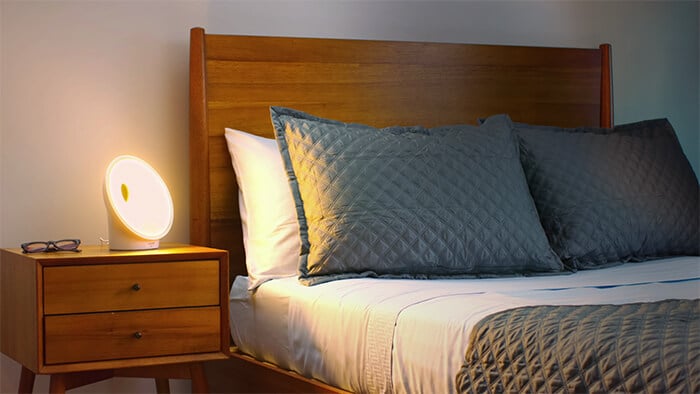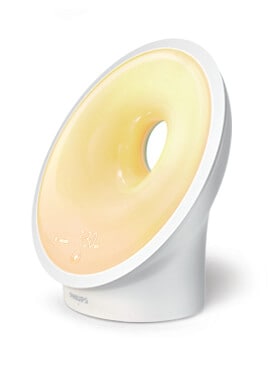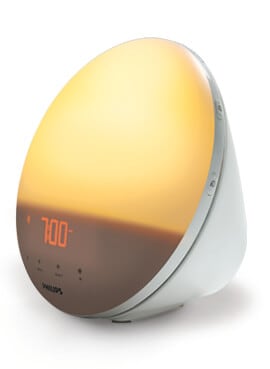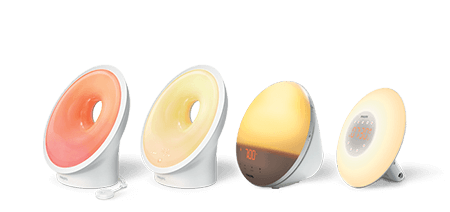
Rise and shine with a Philips Sleep and Wake-up Light
Physician and pharmacist recommended for helping to establish a healthy sleep-and-wake routine2

Gentle sunrise Unlike your phone alarm jolting you awake, the light begins to gradually turn on 30 minutes before your set wake-up time for a more natural wake-up experience

Increased energy By waking up to a more natural light, the device can help you to feel more refreshed1 for more energy throughout the day3

Soothing sunset At night, the light gradually dims and plays relaxation sounds to help you fall asleep more peacefully5
See how Philips’ lights compare
While other leading wake-up lights brighten in large, unnatural steps, Philips Sleep & Wake-up Lights are designed to brighten for a gradual transition from dark to light4.

Over 20 years of experience developing Wake-Up Lights

Recommended by doctors and pharmacists
Each Philips Wake-up light is clinically proven to improve your mood1 and increase energy throughout your day3.

simulation

brightness
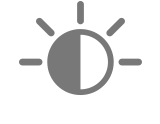
settings
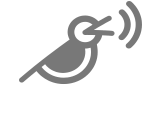
sounds
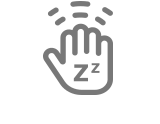
alarm

Radio
Find the Wake-Up Light for you
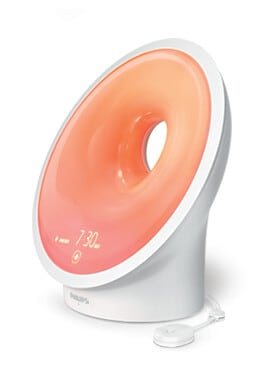
App enabled Connected Sleep
& Wake-Up Light
HF3670/60
Unfortunately this product is no longer available
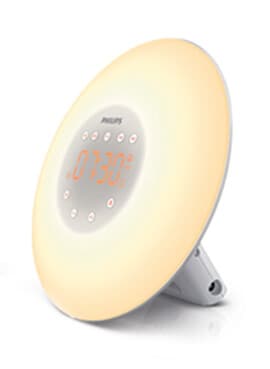
Most affordable Standard Wake-Up Light
HF3500/60
Unfortunately this product is no longer available
Light gradually turns on 30 mins. before set wake-up time for a more natural wake-up




Prepares your body to fall asleep by gradually decreasing light to your set duration




Charge your mobile phone and/or use as a speaker for a music playing device




Soft light helps you find your way in the dark and is easily activated with a tap on the clock








Set advanced alarms and customize sound and light patterns through the SleepMapper app




Measures the bedroom’s temperature, noise, light and humidity to help improve sleep space




Light gradually turns on 30 mins. before alarm for a natural wake-up




Prepares your body for sleep by gradually decreasing light levels




Charge your mobile phone and/or use as a speaker for a music player




Activated by tapping, soft light helps you find your way in the dark








Customize alarms, sound, and light patterns through a mobile app




Measures the bedroom’s temperature, noise, light and humidity levels




App HF3670/60
enabled
Unfortunately this product is no longer available
Most HF3500/60
affordable
Unfortunately this product is no longer available

Over 20 years of experience developing Wake-Up Lights

Recommended by doctors and pharmacists

Footnotes 1 Gimenez, M.C., Hessels, M., van de Werken , M., de Vries, B., Beersma, D. G. M., & Gordjin , M. C. M. (2010). Effects of artificial dawn on subjective ratings of sleep inertia and dim light melatonin onset. Chronobiology international, 27(6), 1219-1241.doi:10.3109/07420528.2010.496912 2 Philips WUL Claims Report_US Physicians_Recontact_071620 N=16, Pages 6,13. 59% of Physicians and pharmasicists recommend Philips wake-up lights for establishing a healthy sleep and wake routine 3 SET Philips Wake-up Light 2012 Metrixlab (N=78). 44% of users say that Waking up with the WUL gives them energy throughout the day. 4 vs the next leading brands Edge by Ascential, Light Therapy 1P + 3P 2020 Market Share Estimates for Jan 1 2020 – Aug 30 2020 5 Danilenko K. et al. (manuscript in preparation). Dusk of Philips Wake-up lights help people to fall asleep more peacefully.
